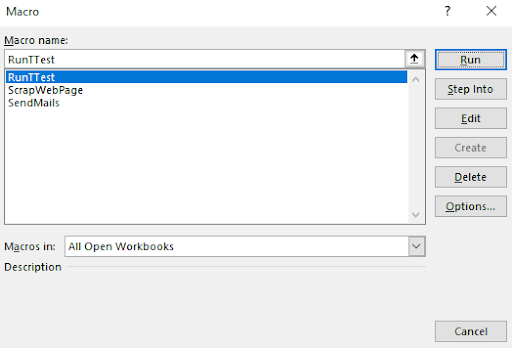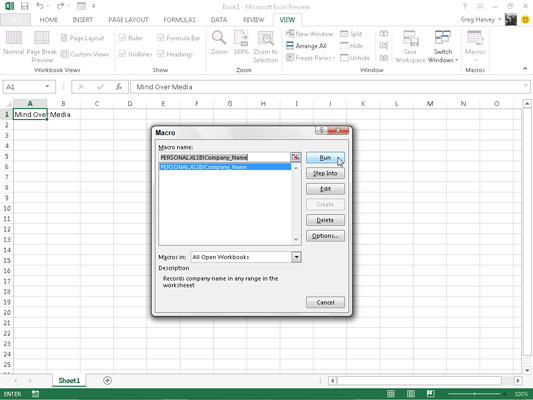
Additional Optionsįor a quick and easy button, use Quick Access toolbar buttons or form control buttons. The ActiveX control takes a little longer than the form control to set up however, once finished, any instructions in the “ Click” subroutine will run when the user clicks the button.

Be sure that the listbox in the upper right-hand corner shows “ Click.”.This will bring up the Visual Basic editor.Right-click the “Say_Hello” button and choose “ View Code.”.The third option, an ActiveX control button, is more powerful than a form control button because it harnesses the full range of the Visual Basic language. With your new “Say_Hello” button is in place, feel free right-click it, choose “ Properties,” and modify the font, size, position, and other attributes. Click the name of the macro that you wish to run when the user presses the “Say_Hello” button, then choose “OK.” If you haven’t yet created the macro, you can create it now with the “New” button or you can record one with the “ Record…” button.When you release your mouse button, a macro dialog box will appear.Click and drag a rectangle for the “Say_Hello” button.Choose “ Insert | Button (Form Control).”.

More flexible than the Quick Access toolbar, a form control button can go anywhere in your workbook, and you control the position, size, text, and style. Your “Say_Hello” button can’t appear anywhere except in the Quick Access Toolbar, and it can do nothing but run a macro. Your “Say_Hello” button now appears on the Quick Access toolbar.Īlthough this is the easiest method, it is also the least flexible.


The easiest way is to add a macro button to your spreadsheet, for which Excel offers three straightforward methods: But, once you have a macro, how do you access it? If you’ve ever repeated the same actions multiple times in a spreadsheet, you’ll benefit from recording a macro to automate those tasks.


 0 kommentar(er)
0 kommentar(er)
